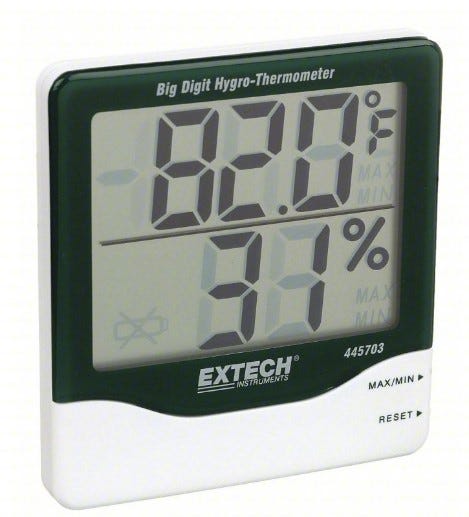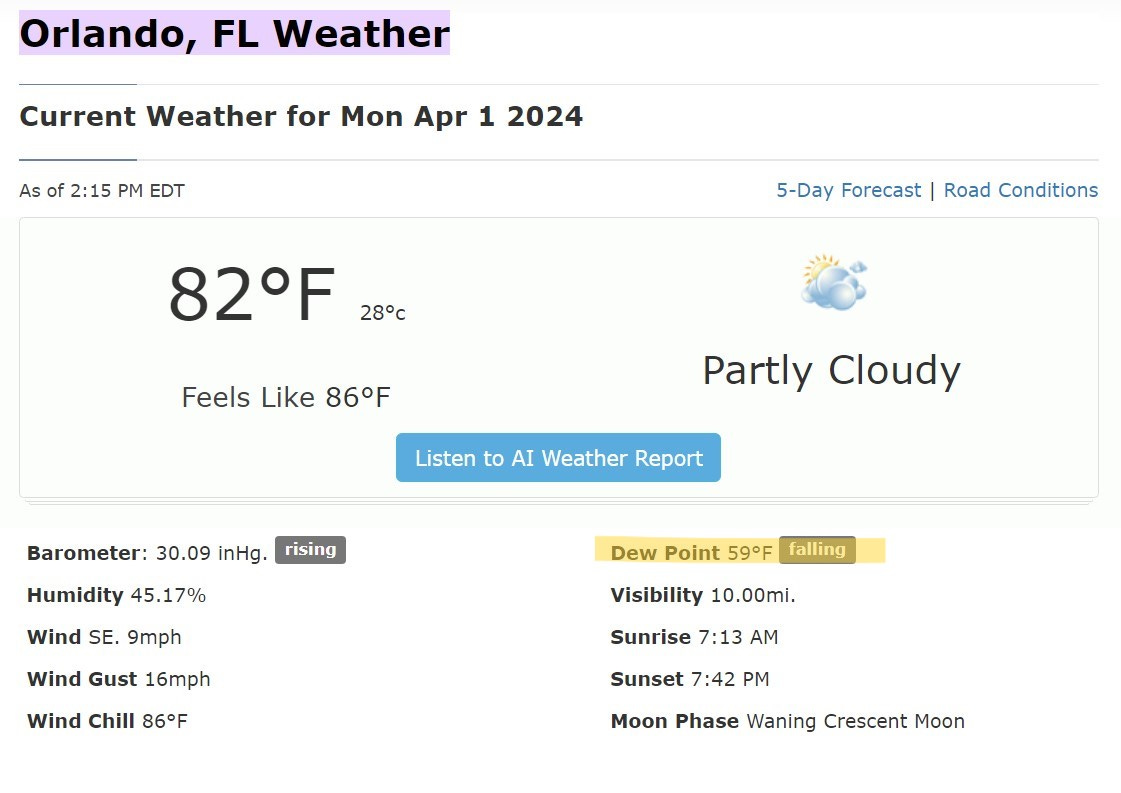Introduction
Everybody knows how humidity feels. But how do we define it? Why does it occur? Why is it important? And how can learning about humidity help humanity?
Let’s go over the basics.
The Basics
The sun is the primary driver of all life and movement on earth. Every natural system on our planet is tied to the sun, its gravitational pull, and the heat it generates.
The troposphere is the lowest part of Earth’s atmosphere and contains most of its air and water. As a result, this is the part of the earth we living things call home.
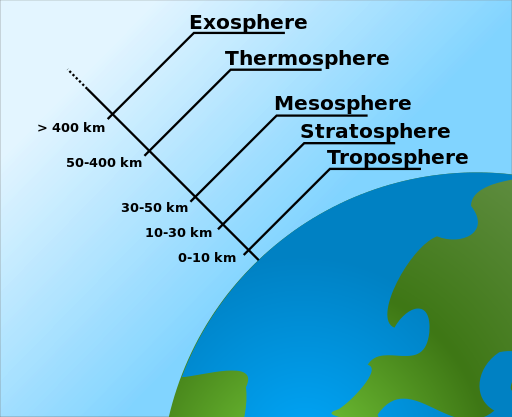
The life-sustaining troposphere depends entirely upon water moving up and down. To move up and down, water has to travel in, through, and on the air.
Water’s movement through the air is directly tied to heat from the sun, so in higher temperatures water moves up ↑ and in lower temperatures water moves down ↓.
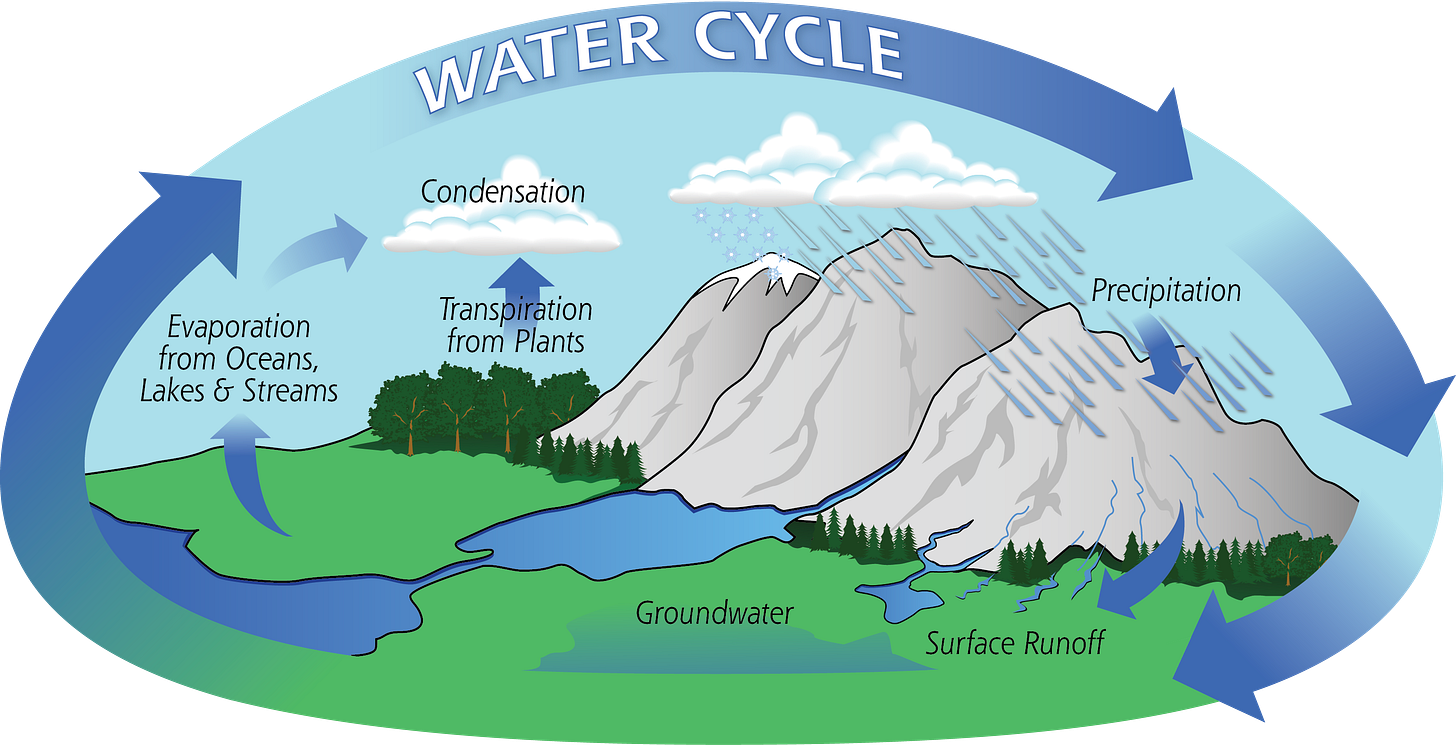
Water in its simplest and smallest form is called a molecule. Each water molecule is made up of three smaller, specific parts called atoms: 2 hydrogen atoms and 1 oxygen atom (H₂O).
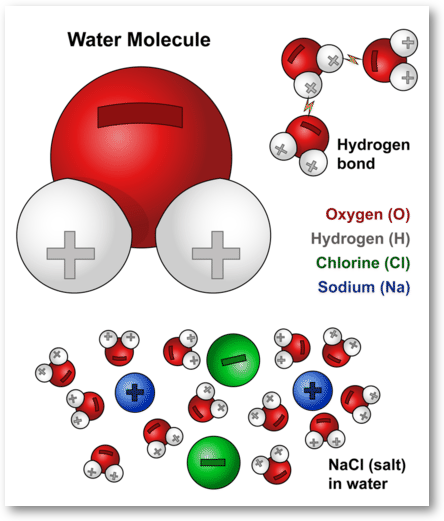
Water exists in three physical states: solid (ice), liquid (water), and gas (vapor). Water is, in fact, the only naturally occurring substance on Earth that can be found in these three physical states.
In a solid state (ice), H₂O molecules do something incredible that other solids don’t – instead of getting denser and heavier, they space out and get lighter, allowing solid water to float on liquid water!
In a liquid state (water), H₂O molecules can move or “flow” because their double hydrogen bond allows them to “stick” to one another. In this state, water molecules are bonded together and can take any shape.
In a gaseous state (vapor), H₂O molecules are even less packed, lighter than air, and move up, down, and all around through the air.
Water can change its state depending on how much heat is applied. The higher the temperature, the more “excited” a water molecule gets and moves around. The lower the temperature, the less energetic a water molecule gets and slows down. Water molecules in gas form (vapor) move about freely, while water molecules in solid form (ice) are nearly frozen still.
When water temperature warms, it turns from a liquid to a gas. We call this evaporation, or the process of turning into a vapor.
When water temperature cools, it turns from a gas to a liquid. We call this condensation. “Condense” means to get denser, to get closer, or to pack together.
Evaporating water molecules move around a lot and occupy more space. Condensing water molecules move slower and occupy less space.
Given that evaporation and condensation are directly tied to heat, we can predict the ways they affect water:
If the temperature goes up, liquid water evaporates (turns to a gas).
If the temperature drops, water vapor condenses (turns to a liquid).
If the temperature drops even more, liquid water condenses (turns to ice).
These processes are very consistent and highly predictable, which is why the science of water is integrated into our everyday lives.
Note: There is a difference between evaporation and boiling. Evaporation is a natural process whereas boiling in the general sense is heating water rapidly.
Pressure
If a water molecule is in an open space, an increase in temperature spreads it out (low pressure). Think of this as a cup of water in the microwave with no lid – as the temperature increases, the more water vapor fills the microwave.
If a water molecule is in a contained space, an increase in temperature freaks it out (high pressure). Think of this as a cup of water in the microwave with a lid – as the heat increases, the water molecules move faster and faster until the pressure eventually pops the lid off the cup or rips a hole in its side.
OK, That’s Water. Now a Little About Air.
Warm air molecules, like warm water molecules, are spread farther apart. This means the warmer the air, the more space there is for water, dust, and other particles to fill up. Since warm air has the potential to hold more water than cool air, it’s easier for water to work its way into warm air because there’s “extra room.”
Cool air molecules, like cool water molecules, are packed closer together. This means the cooler the air, the less space there is for water, dust, and other particles to fill up. Since cool air has the potential to hold less water than warm air, it’s harder for water to work its way into cold air because there’s “less room.”
When you hang a wet shirt out “to dry” in the sun, the water doesn’t just magically disappear; no, it is absorbed by the hot air around the shirt and carried away.
Humidity and Humans
Because humans live and work in the troposphere (the lowest and most air-rich level of Earth’s atmosphere), our daily lives are heavily affected by water in the air.
As our understanding of the relationship between air and water advanced, scientists came to several conclusions:
The air has space between it
Air can hold water in that space
The amount of water in the air (humidity) depends upon how much water the air can hold and
How much water it can hold is directly connected to the temperature of the air. The warmer the temperature, the more space between molecules and the more water the air can hold. The colder the temperature, the less space between molecules and the less water the air can hold.
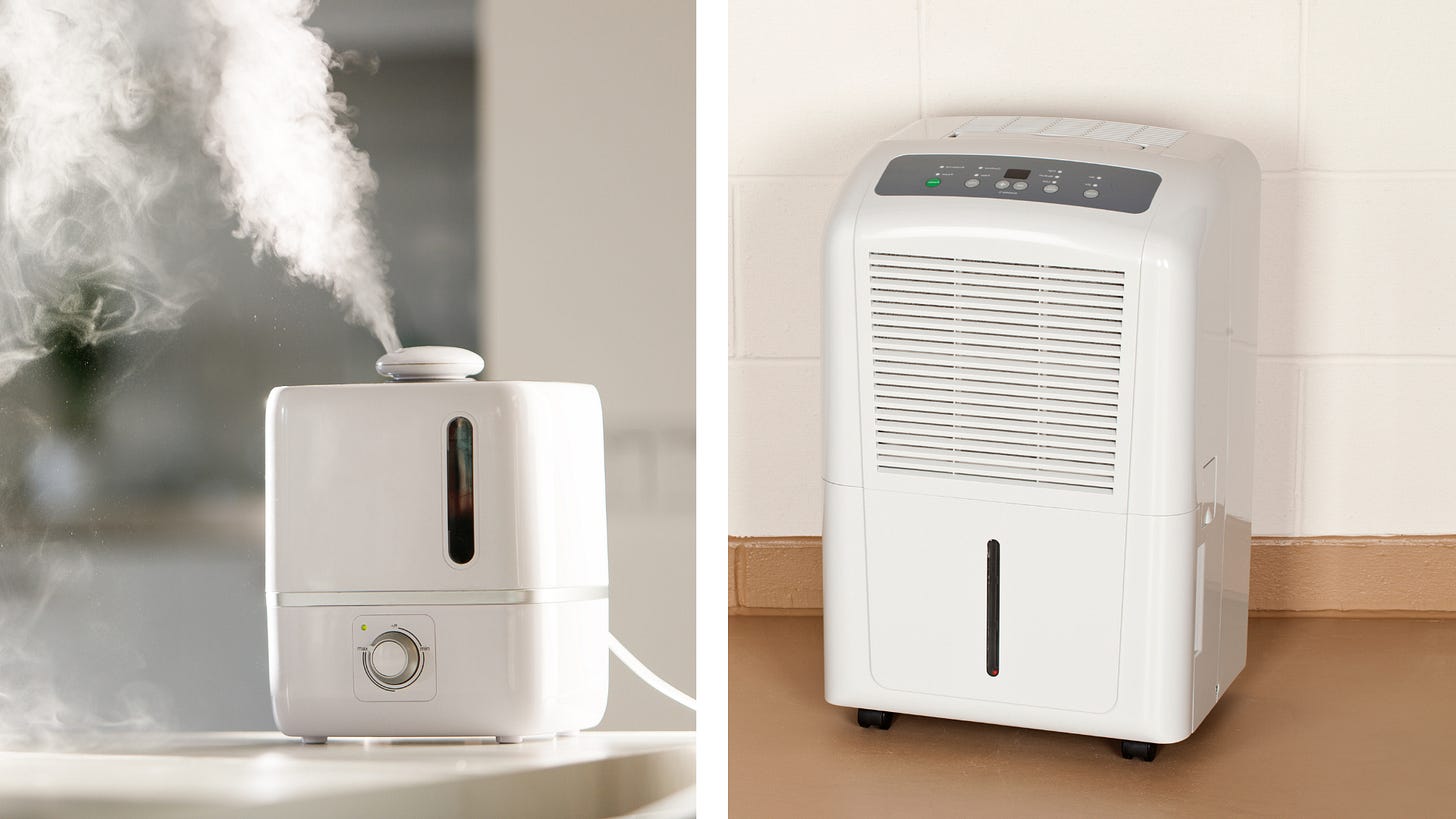
Side note: an easy way to demonstrate this to children is using humidifiers and dehumidifiers. Ask kids to fill the tank of the humidifier and check it periodically? Where did the water go? Into space within the air. Then take a dehumidifier and show them the empty tank. Run the dehumidifier and check back an hour later. How did the water get there? It was pulled from within the air.
Relative Humidity
Humidity is the amount of water in the air, or the amount of water that fills the space within the air.
How much water is in the air depends upon how much water the air can hold. Another way to say it is that the humidity is relative to how much the air can hold. If the air is warmer and can hold more water, then more water can enter it. If the air is cooler and can hold less water, then less water can enter it. Because this is all relative, we call this relative humidity.
Relative humidity, calculated and presented using percentages (44% relative humidity, 68% relative humidity, etc.), is the amount of the air that water could take up vs. the amount of water it will take up. So if there’s enough space in the air for water to take up 100% but water only takes up 50% of that space, we call that 50% relative humidity. This is similar to taking a glass that can hold water all the way to the top (100%), but filling it halfway (50%), using only half of its full capacity.
Relative humidity is the amount of airspace that water is expected to take up that day, like a sponge in the air. A news report that mentions “68% relative humidity” tells us: ‘the air is capable of holding 100% water capacity, but based on the temperature today it will only be holding 68% of that amount of water.’ Or another way: ‘the air is roughly 2/3 filled with water today.’
Relative humidity is the amount of water vapor in the air [compared to] the amount of water vapor that could be in the air (68/100 = 68% relative humidity).

When relative humidity reaches 100 percent capacity, that means the air is absolutely full of water. Any more water and the water will start to condense into liquid water, forming dew, fog, or clouds, depending on the altitude and other atmospheric conditions. This is what happens when we see dew on the grass in the morning: the air had a bunch of water in it from the previous hot day, but when the air cooled overnight it couldn’t hold all that water and had to release some in the form of dew – like a sponge being squeezed out!
Dew Point
It turns out, however, that many scientists are not fans of relative humidity as a moisture indicator because it can be inaccurate, misleading, and confusing to compare what is to what potentially could be (and that’s if the temperature doesn’t change the percentage!). According to these scientists, a better calculation for humidity is the dew point.
The dew point (short for dew point temperature) is the temperature at which the air is completely saturated with moisture and begins to condense into dew, fog, or clouds, depending on the altitude and other atmospheric conditions. When the dew point is reached, dew and other forms of moisture start to form.
For this reason the dew point is also when the air reaches 100% relative humidity, when it can no longer hold water in gas form. This is also how clouds form: evaporated water climbs into the atmosphere until it gets so cold the air can’t hold any more of it and it takes the form of clouds!
Knowing the dew point is useful because it doesn’t mean the water in the air will condense but instead says, “If the temperature were to hit _____°, condensation would occur.” This is easier for most people to calculate and understand because rather than figuring out how close a percentage is to 100%, professionals and average citizens alike can simply check the temperature and see how close it is to the dew point. The closer the temperature is to the dew point, the more excess water will be in the air and the stickier it will become.
Another reason the dew point is a better moisture measurement than relative humidity is that it isn’t relative. Even though a 90 degree day with 50% relative humidity and a 40 degree day with 50% humidity may read the same, the 90 degree day is oppressively humid compared to the 40 degree day because warmer air can hold more water. Because the dew point exists independent of temperature, it doesn’t face this problem - rising and falling temperatures do not affect the dew point. The dew point only changes as pressure or water vapor change, making its reading more stable and easier to understand.
- Just as meteorologists closely monitor temperatures to see when water will freeze into snow and ice (32 degrees Fahrenheit), they also closely monitor the dew point temperature to know how muggy it will be outside. The dew point is also easier for everyday citizens to understand and can better protect them from heat complications and sun damage.
The Heat Index
The heat index, also called apparent temperature, is what a temperature feels like to the human body*. The heat index is calculated by factoring in both the temperature outside and the relative humidity (the water in the air) to determine how it really feels. This means it could be 95 degrees outside but heat from humidity can make it feel like 105 degrees to a person on the ground. The heat index is important because it lets people know how the temperature outside will affect their day. For outdoor workers or people with health conditions, understanding the heat index will protect them from the effects of heat, dehydration, and other medical conditions.
*It’s important to note that the heat index is only for shady locations. Direct sunlight exposure can increase the “feels like” temperature by up to 15 degrees.
Altitude
Altitude is a location’s height above sea level (also called elevation).
Altitude connects to humidity because lower altitudes have more air and warmer temperatures due to the sun heating the land and water and high altitudes have less air and lower temperatures due to less water. Lower altitudes also have more air because air has mass and the force of gravity pulls it down.
Applying what we know about humidity to altitude (that increasing temperatures increase the water in the air), the lower the altitude, the warmer the temperatures and the higher the humidity. This is why states that are surrounded by large bodies of water like Florida and Hawaii have such high humidity.
Conversely, the higher the altitude, the cooler the temperatures and the lower the humidity. This is why there is next to no humidity in the western United States because in order for air to climb to those altitudes all the water has to be condensed, like a sponge being squeezed of all its water.
Conclusion
Humidity, contrary to popular belief, is not a bad thing. It is a natural process that keeps our atmosphere moving and our life biomes thriving. It is also a vital measurement tool we can use to make a weather forecast or model hurricane activity weeks in advance.
Reading and understanding relative humidity percentages, dew point temperatures, and heat index temperatures is a surefire way to know how humid the air will be on any given day and the effect that humidity will have on you and other people in your community. Humidity can affect everything from what clothes you wear that day to the amount of water you need to drink that day to the storm systems that are heading your way, so it is important to factor it into decision-making and take precautions to keep yourself safe. And on a less serious note, knowing the science of humidity can be enlightening and fun!











